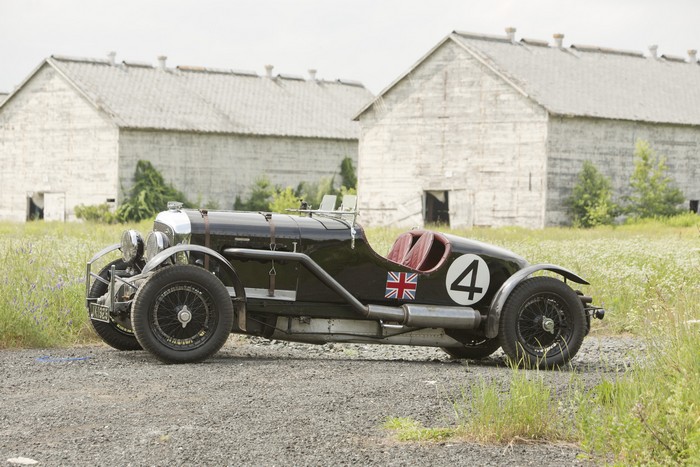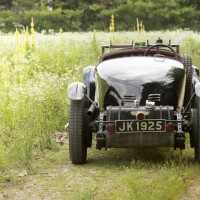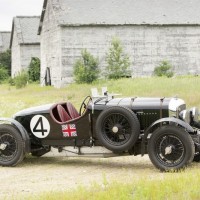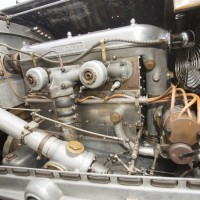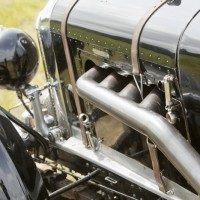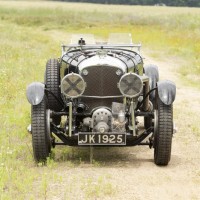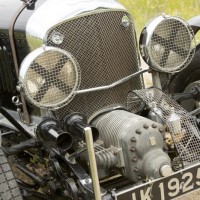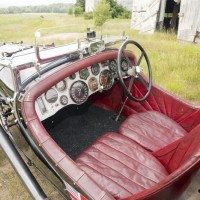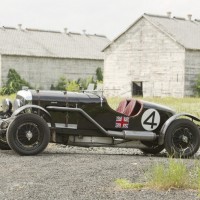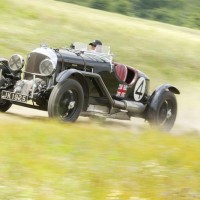SCM Analysis
Detailing
| Vehicle: | 1931 Bentley 4½ Litre Supercharged Le Mans |
| Number Produced: | 50 |
| Original List Price: | N/A |
| SCM Valuation: | $1.2m to $6m |
| Tune Up Cost: | $400 |
| Chassis Number Location: | Engine side of firewall |
| Engine Number Location: | On right engine bearer |
| Club Info: | Bentley Drivers Club |
| Website: | http://www.bdcl.org |
This car, Lot 152, sold for $4,647,500, including buyer’s premium, at Bonhams’ Quail Lodge sale in Carmel, CA, on August 16, 2013.
In a year when world records have been falling like flies, this is yet a new standard. This was part of Bonhams’ 16th Annual Carmel auction and a resounding success with a near 90% sale-through rate and $32.7 million realized.
Originality has become the must-have to serious collectors, and this car, MS3944, retains its original numbered chassis, engine (MS3941), supercharger (144), axles and steering box — as well as its original numbered hood, firewall, radiator and instrumentation.
It runs a D Type close-ratio gearbox (7255) as original spec, if possibly not the original hardware.
Dr. Hay’s opinion is that the team car pattern seats, fold-flat windshield and aero screens, front and rear fenders and some of the instruments were all retained when the car was rebuilt in 1938. In Bentley terms, this makes it an exceptionally original car — aside from the 75-year-old body, but a Bentley with its original body is the exception rather than the rule.
Going rate for an average, almost certainly rebodied 4½ in the U.K. is £400k–£450k ($600k–$700k). If it’s supercharged, probably twice that, and if it was one of the original 50 supercharged cars, probably twice that again — about the same as a 4½ Litre Le Mans team car. (Blowers, sadly, for all their spiff, never actually won very much).
Remember this is one of three Le Mans-spec cars built in period.
SCM’s Donald Osborne was on the ground at Quail and actually saw the car, commenting: “Excellent bodywork. Shiny paint shows some alligatoring, rubs and general signs of aging, but is consistent. Great brightwork. Beautiful patina on seats.”
Sensibly, it had an electric cooling fan but retains the standard magneto, and the center throttle, which many owners change to a right-handed gas pedal because they can’t get on with the “back-to-front layout.” This was refreshing.
Great on the road
These are simply marvelous old buses to drive — once you’ve acclimatized to the pedal layout and the heavy, non-synchromesh gear change. When you’ve got it right, the shift is a joy and the lever snicks between ratios like a well-oiled counterweight. When you’ve mastered that, try double-declutching down a couple of ratios while also signaling by hand that you’re about to turn at a junction. Hours of entertainment….
Then, of course, there’s the famous “bloody thump” from the big “4” — these things are immensely torquey and surprisingly quick even in 3 Litre form. As 4½s, there’s more oomph and the blower makes it all more fizzy and exciting.
Star of the show brings the bucks
Osborne added: “Wonderfully documented and oozing presence, this was the star of the sale. During the preview it attracted endless attention. Charles Noble’s son was with the car all through the preview, answering questions and presenting it and it was taken out on a number of test drives, which served to entertain all within earshot. I loved the car, thought it to be quite neat.”
And, yes, being on hand to answer questions does always win confidence for buyers — other sellers, please note.
So one very original Blower plus one-family owned for 55 years equaled spirited bidding in the sales room and on the telephones, driving the winning private European buyer to pay $4,647,500, resulting in a new record for a production blower Bentley.
Was it priced right? Compare it with one of the most untouched of the 50 “Blowers” — one of the three original boattails — that was priced aggressively and failed to sell to a $7m offer at Gooding & Co.’s Pebble Beach sale in 2012.
Also consider that the 1929 Birkin Blower single-seater 4½ Litre brought $7.9m at Bonhams’ 2012 Goodwood Festival of Speed sale — and is currently the subject of a dispute as to whether H.M. Government will let such a work of art out of the U.K. — the same government that hosts the Elgin Marbles… oops.
So, I have to agree with the esteemed Mr. Osborne when he concluded: “This is one of the most charismatic Bentleys and was worth every penny paid — maybe even a bit of a bargain.” ?
(Introductory description courtesy of Bonhams.)
